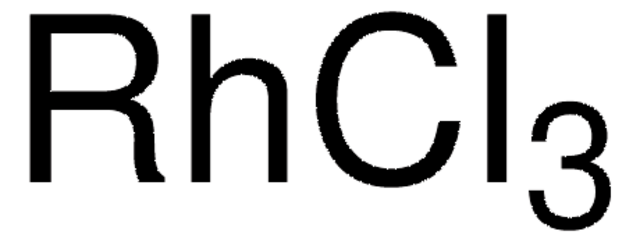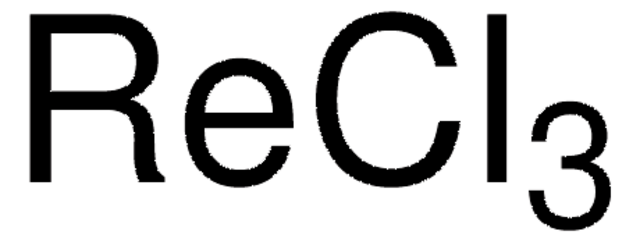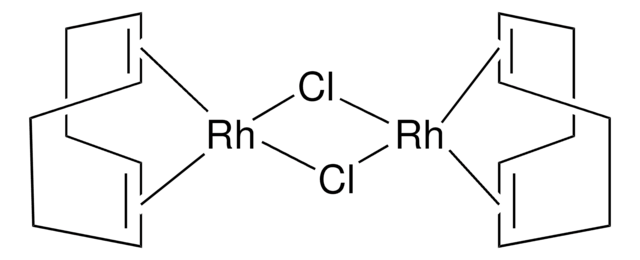206261
Rhodium(III) chloride hydrate
Rh 38-40 %
Synonym(s):
Rhodium trichloride hydrate
About This Item
Recommended Products
form
powder or crystals
Quality Level
composition
Rh, 38-40%
reaction suitability
core: rhodium
reagent type: catalyst
mp
100 °C (dec.) (lit.)
SMILES string
O.Cl[Rh](Cl)Cl
InChI
1S/3ClH.H2O.Rh/h3*1H;1H2;/q;;;;+3/p-3
InChI key
HSSMNYDDDSNUKH-UHFFFAOYSA-K
Looking for similar products? Visit Product Comparison Guide
Application
Signal Word
Danger
Hazard Statements
Precautionary Statements
Hazard Classifications
Acute Tox. 4 Oral - Aquatic Acute 1 - Aquatic Chronic 1 - Eye Dam. 1 - Met. Corr. 1 - Muta. 2
Storage Class Code
8A - Combustible corrosive hazardous materials
WGK
WGK 3
Flash Point(F)
Not applicable
Flash Point(C)
Not applicable
Personal Protective Equipment
Choose from one of the most recent versions:
Already Own This Product?
Find documentation for the products that you have recently purchased in the Document Library.
Our team of scientists has experience in all areas of research including Life Science, Material Science, Chemical Synthesis, Chromatography, Analytical and many others.
Contact Technical Service











